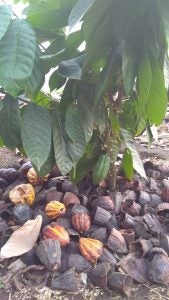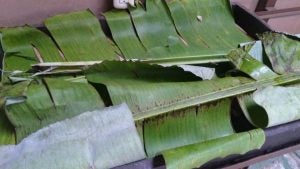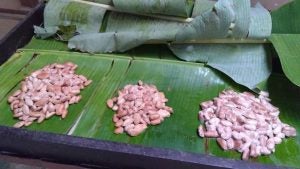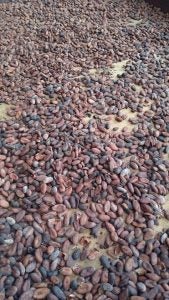Happy Valentine’s Day! On this day devoted to love, it is estimated that U.S. consumers will spend nearly $19 billion on this holiday. Over $4 billion of that is spent on jewelry, flowers account for approximately $2 billion, and of course other aspects include clothing, dining out, and other gifts. But the biggest chunk of Valentine’s Day gifts includes candy and chocolates, which reportedly is requested by 94 percent of people.
But these gifts don’t come from the florist or chocolatier, they start on a farm! Approximately 250 million roses are produced around the globe for this holiday, with less than 10 percent of them coming from the U.S. The U.S. imports approximately 80 percent of its flowers from Columbia, followed by Mexico and Ecuador. Countries such as these have optimal growing conditions when areas of our country have plummeting temperatures during peak floral season. These southern countries enjoy humidity, temperature, and soil fertility that are the best for their growth. Although these flowers come from a land far away to get to us, the growing conditions and shipping are generally a much more eco-friendly option than lighting and heating greenhouses in the states to keep up with demand.
As far as chocolate is concerned, it comes from a small tree called the Theobroma cacao, or simply “cacao.” (Pronounced ka-KOW.) Cacao is native to central and South America, but today about 70 percent of the world’s cacao is grown in Africa. The “Theobroma” aspect is Greek for “food of the gods,” and is historically a luxury item drank and eaten by royalty and elitists.
Although 70 percent of cacao is grown in West Africa (Ghana is a major producer) I was fortunate enough to tour a Cacao farm in Costa Rica called El Trapiche, and see the process of cacao bean production firsthand.

A cacao tree takes 3 to 4 years to bear fruit, can produce close to 2,000 pods per year, and each pod encases a sticky white pulp and about 30 to 40 seeds. The seeds (beans) are used to produce chocolate and are extremely bitter. The pods are harvested twice a year and are cut down by a long pole with a machete on the end and are cut open by hand, taking care to not damage the beans inside. After this happens, the beans are placed in wooden boxes and covered with banana leaves to ferment. Banana leaves contain natural bacteria that helps the fermentation process, which makes it more palatable and takes a few days or up to a week, as seen here:


After fermentation, the beans are dried over a fire or in the sun for about a week as seen here:

Next, cacao beans are sent to a factory where they are sifted for foreign objects like rocks or whatnot, weighed, and sorted by type. They are then roasted at 210 to 290 degrees Fahrenheit for 30 mins, up to two hours, while the heat darkens the beans and brings out aroma and flavor. After this, the shells are cracked and blown away, while the cacao beans are crushed into “nibs.” Although there is no alcohol in it, the nibs are ground into a thick paste called chocolate liquor.
What happens next depends on what type of chocolate you want. A chocolate manufacturer may divide the liquor, say, some into chocolate bars and some into cocoa. Cocoa liquor can be slammed by a giant hydraulic press which seperates the cocoa powder from the cocoa butter, (think, powder for baking and butter for cosmetics) while the other part of the liquor can be sweetened with sugar, milk, cocoa butter, vanilla, etc. The texture is then refined by running it through a series of steel roller and “conched” to bring out the flavor. The first chocolate making machine looked like a conch shell, which is where it gets this name, and these machines aerate, mix, mash, and swirl the chocolate. Here other things like soy lecithin or more cocoa butter, etc., may be added to give it a silkier smooth texture. This process may take a few hours or up to six days for more expensive stuff!
Lastly, chocolate is tempered by stirring, letting it cool, heating it back up, and repeating the process several times. This helps chocolate melt easier and gives it that glossy look, and can be poured into a mold. This Valentine’s Day, you can enjoy your flowers and chocolates a bit more since you know where it comes from or how it’s made!
Michelle Miller, the Farm Babe, is an Iowa-based farmer, public speaker and writer, who lives and works with her boyfriend on their farm which consists of row crops, beef cattle, and sheep. She believes education is key in bridging the gap between farmers and consumers.



